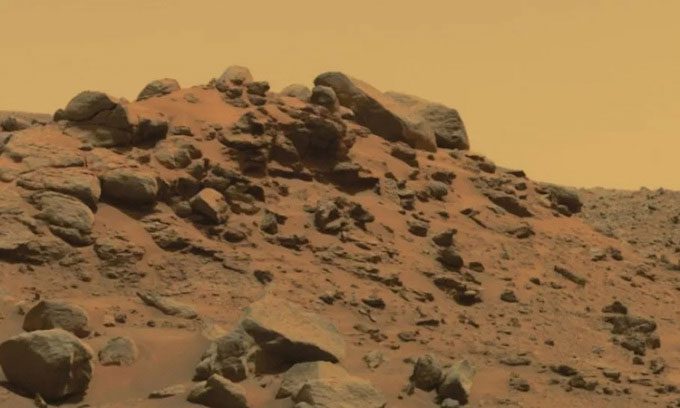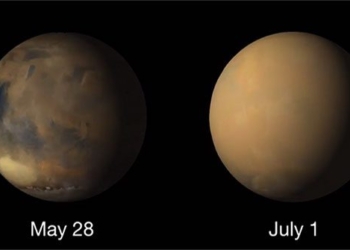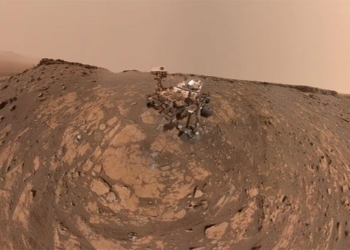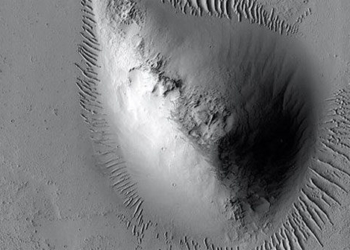The duo of Mars rovers discovers a type of ignimbrite rock on Earth, revealing the planet’s violent eruption history.
The Nili Fossae region of Mars includes the Jezero Crater, which NASA’s Perseverance rover is currently exploring, and is filled with boulders rich in the volcanic mineral olivine. A similar finding was made at the Gusev Crater, where NASA’s Spirit rover operated until its mission concluded in 2010, according to a new study published in the journal Icarus, led by Arizona State University.

Olivine-rich boulders in Gusev Crater on Mars. (Photo: NASA/JPL/Cornell/ASU)
This is the first time scientists have confirmed geological similarities between the two regions, suggesting they may have formed through similar processes. The research team then compared images taken by the Spirit rover of rocks in Gusev Crater with images of rocks on Earth, also noting a connection between them.
“This is an amazing discovery,” said Steve Ruff, the lead author of the study at Arizona State University. “I observed that the texture of the rocks in Gusev Crater closely resembles a specific type of volcanic rock found on our planet. This is ignimbrite, formed from ash, pumice, and lava flows from intense eruptions.”
Previously, no hypothesis suggested that ignimbrite was related to the olivine-rich rocks on Mars. If this new finding is accurate, it implies that past eruptions on the Red Planet were more violent than scientists previously thought.
“Imagine a cloud of hot gas flowing close to the ground, ash almost melting and pumice flowing across the landscape for miles, layering up to hundreds of feet thick in just a few days,” Ruff described.
To confirm the presence of ignimbrite on Mars, scientists may have to wait until samples collected by Perseverance return to Earth for laboratory analysis.





















































